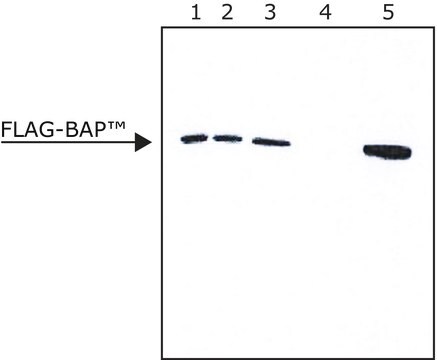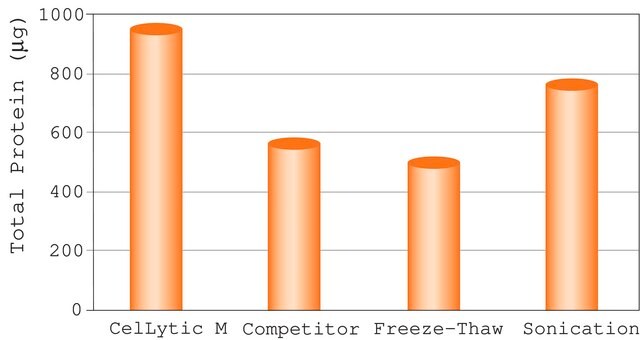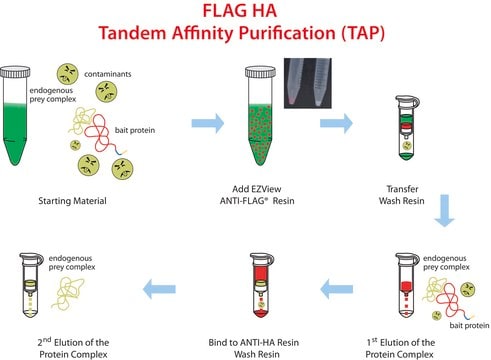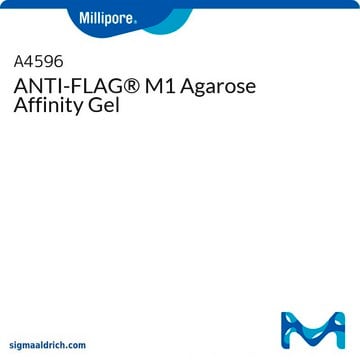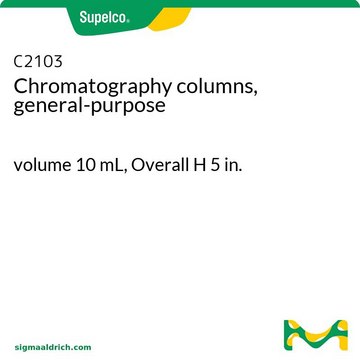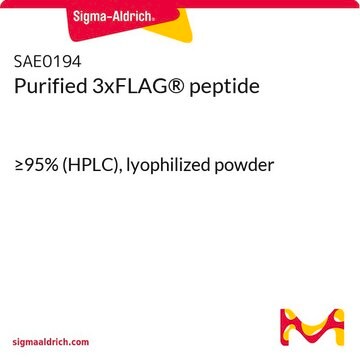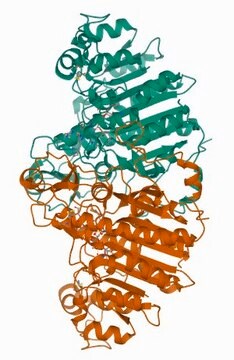CELLMM2
FLAG® M Purification Kit
For Mammalian expression systems.
Sinónimos:
Anti-ddddk, Anti-dykddddk
About This Item
Productos recomendados
Application
Learn more product details in our FLAG® application portal.
Features and Benefits
- Includes ready to use reagents, columns, and a detailed protocol for affinity purification of FLAG fusion proteins.
- ANTI-FLAG M2 Affinity Gel allows efficient binding of FLAG fusion proteins without the need for preliminary steps and calibrations.
- Two alternatives for efficient elution conditions (by acidic conditions or by competition with FLAG peptide).
Packaging
Other Notes
Legal Information
Los componentes del kit también están disponibles por separado
- C2978CelLytic™ M, Cell Lysis Reagent, Suitable for Mammalian cell lysis and protein solubilization.SDS
- SAE0194Purified 3xFLAG® peptide, ≥95% (HPLC), lyophilized powderSDS
- A2220ANTI-FLAG® M2 Affinity Gel, purified immunoglobulin, buffered aqueous glycerol solutionSDS
- C2103Chromatography columns, general-purpose, volume 10 mL, Overall H 5 in.SDS
Storage Class
10 - Combustible liquids
Certificados de análisis (COA)
Busque Certificados de análisis (COA) introduciendo el número de lote del producto. Los números de lote se encuentran en la etiqueta del producto después de las palabras «Lot» o «Batch»
¿Ya tiene este producto?
Encuentre la documentación para los productos que ha comprado recientemente en la Biblioteca de documentos.
Los clientes también vieron
Contenido relacionado
Protein purification techniques, reagents, and protocols for purifying recombinant proteins using methods including, ion-exchange, size-exclusion, and protein affinity chromatography.
Protein expression technologies for expressing recombinant proteins in E. coli, insect, yeast, and mammalian expression systems for fundamental research and the support of therapeutics and vaccine production.
Nuestro equipo de científicos tiene experiencia en todas las áreas de investigación: Ciencias de la vida, Ciencia de los materiales, Síntesis química, Cromatografía, Analítica y muchas otras.
Póngase en contacto con el Servicio técnico